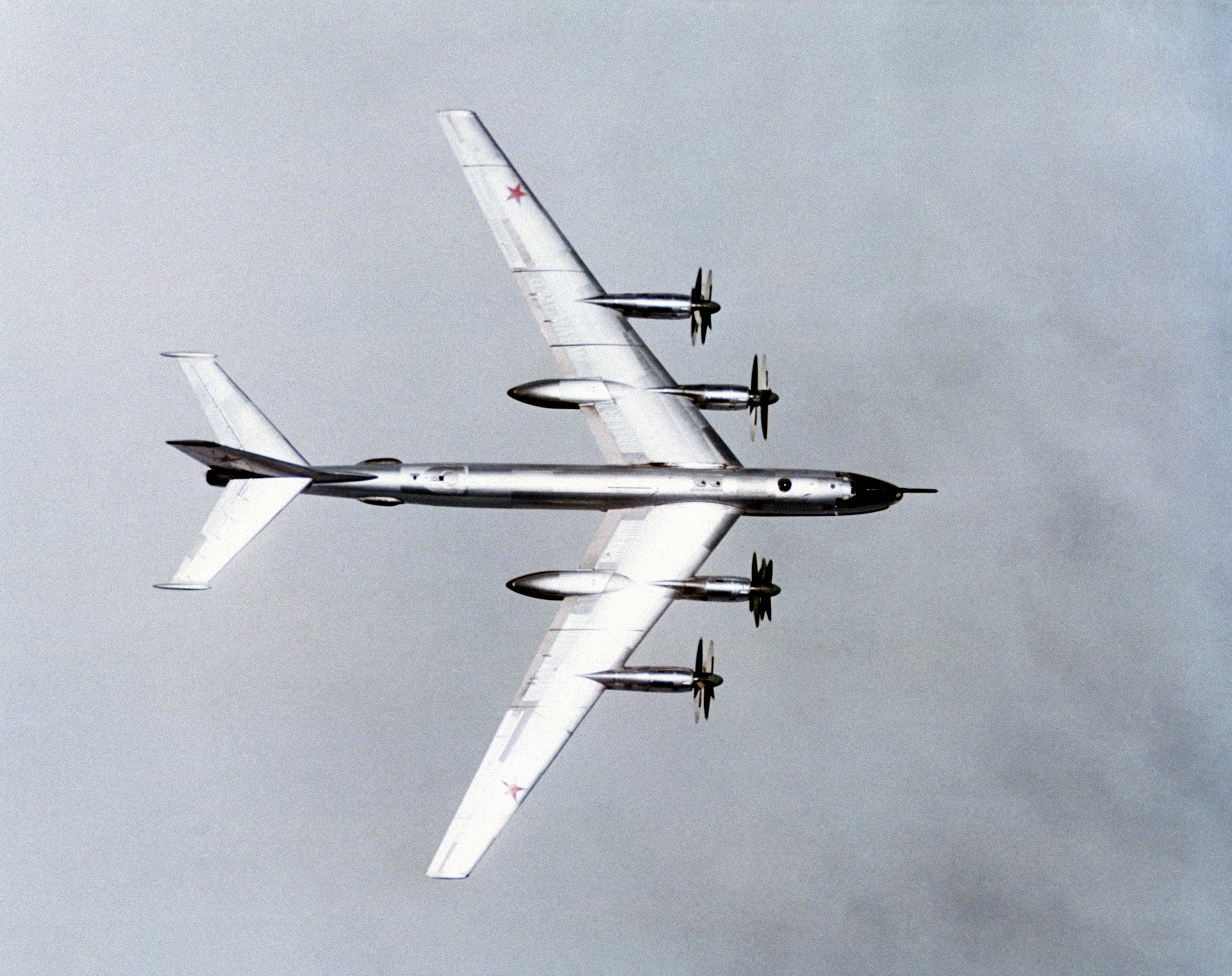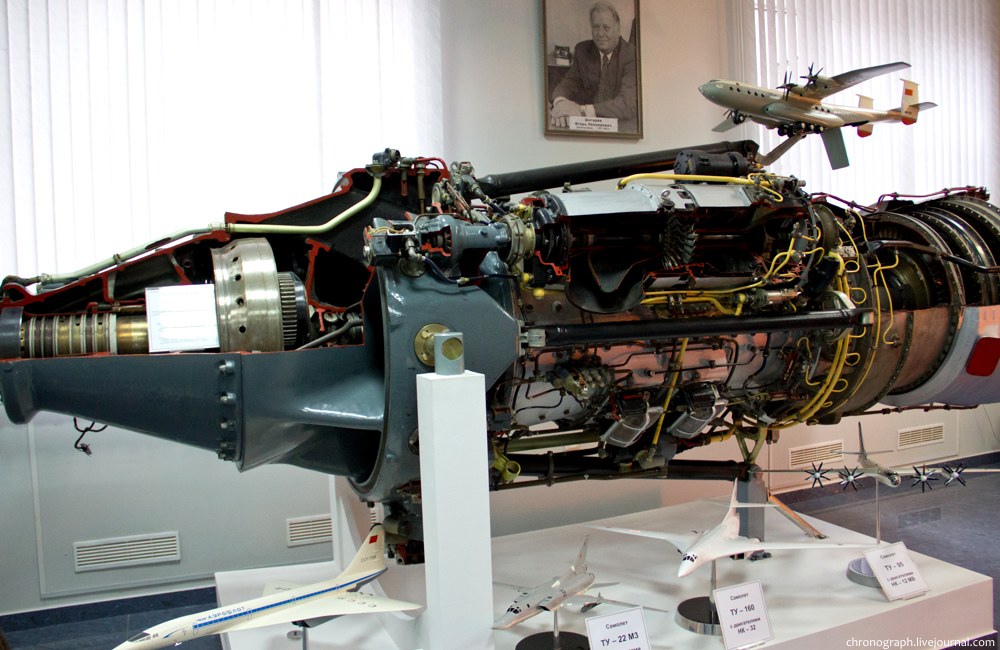|
Kuznetsov NK-14
The Kuznetsov NK-14A was an onboard nuclear-powered engine which was made to be used on the Tupolev Tu-119 nuclear-powered aircraft, designed and built by the Soviet Kuznetsov Design Bureau. The design of the plane was based on a modified Tupolev Tu-95 and would be fitted with two Kuznetsov NK-14A nuclear-fuelled engines inboard fed with heat from a fuselage mounted reactor and two Kerosene-fed Kuznetsov NK-12 turboprops outboard. Development was suspended with the cancellation of the Tu-119, but flight trials would have been made initially fitted to the inboard nacelles of the Tu-119 prototype. References Aircraft nuclear engines Kuznetsov aircraft engines {{nuclear-energy-stub ... [...More Info...] [...Related Items...] OR: [Wikipedia] [Google] [Baidu] |
Nuclear-powered
Nuclear power is the use of nuclear reactions to produce electricity. Nuclear power can be obtained from nuclear fission, nuclear decay and nuclear fusion reactions. Presently, the vast majority of electricity from nuclear power is produced by nuclear ''fission'' of uranium and plutonium in nuclear power plants. Nuclear ''decay'' processes are used in niche applications such as radioisotope thermoelectric generators in some space probes such as ''Voyager 2''. Generating electricity from ''fusion'' power remains the focus of international research. Most nuclear power plants use thermal reactors with enriched uranium in a once-through fuel cycle. Fuel is removed when the percentage of neutron absorbing atoms becomes so large that a chain reaction can no longer be sustained, typically three years. It is then cooled for several years in on-site spent fuel pools before being transferred to long term storage. The spent fuel, though low in volume, is high-level radioactive waste. ... [...More Info...] [...Related Items...] OR: [Wikipedia] [Google] [Baidu] |
Tupolev Tu-119
The Tupolev Tu-95LAL (russian: Летающая Атомная Лаборатория, translit=Letayushchaya Atomnaya Laboratoriya, lit=flying atomic laboratory) was an experimental aircraft that was a modified Tupolev Tu-95 Soviet bomber aircraft, which flew from 1961 to 1965, analogous to the United States' earlier Convair NB-36H. It was intended to see whether a nuclear reactor could be used to power an aircraft, primarily testing airborne operation of a reactor and shielding for components and crew. Design and development During the Cold War the USSR had an experimental nuclear aircraft program. Without the need to refuel, a nuclear-powered aircraft would have greatly extended range compared to conventional designs. On 12 August 1955 the Council of Ministers of the USSR issued a directive ordering bomber-related design bureaus to join forces in researching nuclear aircraft. The design bureaus of Andrei Tupolev and Vladimir Myasishchev became the chief design teams, while ... [...More Info...] [...Related Items...] OR: [Wikipedia] [Google] [Baidu] |
Kuznetsov Design Bureau
The Kuznetsov Design Bureau (russian: СНТК им. Н. Д. Кузнецова, also known as OKB-276) was a Russian design bureau for aircraft engines, administrated in Soviet times by Nikolai Dmitriyevich Kuznetsov. It was also known as (G)NPO Trud (or NPO Kuznetsov) and Kuybyshev Engine Design Bureau (KKBM). NPO Trud was replaced in 1994 by a Joint Stock Company (JSC), Kuznetsov R & E C. By the early 2000s the lack of funding caused by the poor economic situation in Russia had brought Kuznetsov on the verge of bankruptcy. In 2009 the Russian government decided to consolidate a number of engine-making companies in the Samara region under a new legal entity. This was named JSC Kuznetsov, after the design bureau. Products The Kuznetzov Bureau first became notable for producing the monstrous Kuznetsov NK-12 turboprop engine that powered the Tupolev Tu-95 bomber beginning in 1952 as a development of the Junkers 0022 engine. The new engine eventually generated about 15,000 horse ... [...More Info...] [...Related Items...] OR: [Wikipedia] [Google] [Baidu] |
Tupolev Tu-95
The Tupolev Tu-95 (russian: Туполев Ту-95; NATO reporting name: "Bear") is a large, four-engine turboprop-powered strategic bomber and missile platform. First flown in 1952, the Tu-95 entered service with the Long-Range Aviation of the Soviet Air Forces in 1956 and was first used in combat in 2015. It is expected to serve the Russian Aerospace Forces until at least 2040. A development of the bomber for maritime patrol is designated the Tu-142, while a passenger airliner derivative was called the Tu-114. The aircraft has four Kuznetsov NK-12 engines with contra-rotating propellers. It is the only propeller-powered strategic bomber still in operational use today. The Tu-95 is one of the loudest military aircraft, particularly because the tips of the propeller blades move faster than the speed of sound. Its distinctive swept-back wings are set at an angle of 35°. The Tu-95 is the only propeller-driven aircraft with swept wings that has been built in large numbers. De ... [...More Info...] [...Related Items...] OR: [Wikipedia] [Google] [Baidu] |
Kuznetsov NK-12
The Kuznetsov NK-12 is a Soviet turboprop engine of the 1950s, designed by the Kuznetsov design bureau. The NK-12 drives two large four-bladed contra-rotating propellers, diameter (NK-12MA), and diameter (NK-12MV). It is the most powerful turboprop engine to enter service. Design and development The design that eventually became the NK-12 turboprop was developed after World War II by a team of Soviet scientists and deported German engineers under Ferdinand Brandner, who had worked for Junkers previously; the design bureau was headed by chief engineer Nikolai D. Kuznetsov. Thus, the NK-12 design evolved from late-war German turboprop studies. This started with the postwar development of the wartime Jumo 022 turboprop design that was designed to develop , weighing . The effort continued with a , weighing , completed by 1947. Evolution to the TV-12 engine required extensive use of new Soviet-developed alloys and was completed in 1951. The NK-12 is the most powerful turboprop ... [...More Info...] [...Related Items...] OR: [Wikipedia] [Google] [Baidu] |
Tu-119
The Tupolev Tu-95LAL (russian: Летающая Атомная Лаборатория, translit=Letayushchaya Atomnaya Laboratoriya, lit=flying atomic laboratory) was an experimental aircraft that was a modified Tupolev Tu-95 Soviet bomber aircraft, which flew from 1961 to 1965, analogous to the United States' earlier Convair NB-36H. It was intended to see whether a nuclear reactor could be used to power an aircraft, primarily testing airborne operation of a reactor and shielding for components and crew. Design and development During the Cold War the USSR had an experimental nuclear aircraft program. Without the need to refuel, a nuclear-powered aircraft would have greatly extended range compared to conventional designs. On 12 August 1955 the Council of Ministers of the USSR issued a directive ordering bomber-related design bureaus to join forces in researching nuclear aircraft. The design bureaus of Andrei Tupolev and Vladimir Myasishchev became the chief design teams, whil ... [...More Info...] [...Related Items...] OR: [Wikipedia] [Google] [Baidu] |
Aircraft Nuclear Engines
An aircraft is a vehicle that is able to fly by gaining support from the air. It counters the force of gravity by using either static lift or by using the dynamic lift of an airfoil, or in a few cases the downward thrust from jet engines. Common examples of aircraft include airplanes, helicopters, airships (including blimps), gliders, paramotors, and hot air balloons. The human activity that surrounds aircraft is called ''aviation''. The science of aviation, including designing and building aircraft, is called ''aeronautics.'' Crewed aircraft are flown by an onboard pilot, but unmanned aerial vehicles may be remotely controlled or self-controlled by onboard computers. Aircraft may be classified by different criteria, such as lift type, aircraft propulsion, usage and others. History Flying model craft and stories of manned flight go back many centuries; however, the first manned ascent — and safe descent — in modern times took place by larger hot-air ... [...More Info...] [...Related Items...] OR: [Wikipedia] [Google] [Baidu] |


